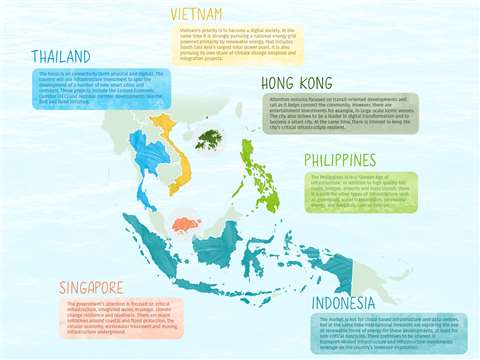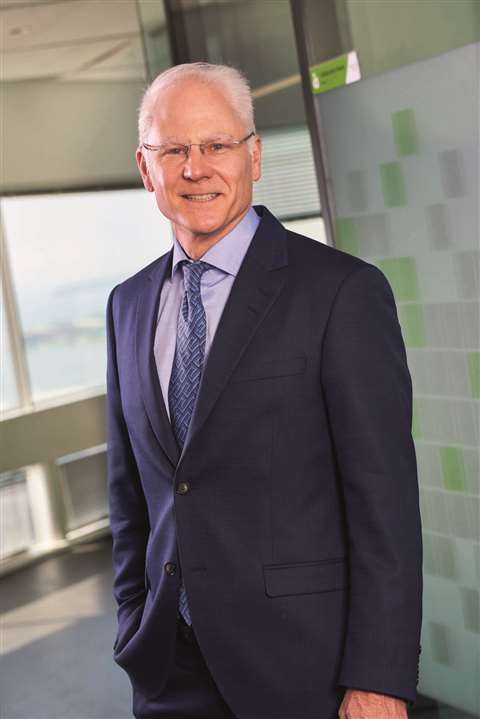Does engineering design matter for Asia’s future infrastructure investments?
12 January 2022
A range of factors, not only the engineering design process, require attention if Asia is to meet its ambitions of future-proofing tomorrow’s projects, according to Stephane Asselin, Aurecon’s chief executive, Asia and Jasmin Abad Lock, principal of Infrastructure Advisory.

Although infrastructure markets and policies are shifting, the Asia and Pacific region remains one of the largest in the world, with some US$900 billion spent each year.
However, according to the Asian Development Bank, this figure falls short of the US$1.7 trillion that the region should spend to keep pace with climate change and economic growth.
National governments have recognised this and have already put in place necessary policies, public funds, and other measures to increase private sector participation – including openly inviting international partners to support their infrastructure development ambitions.
Despite setbacks caused by Covid-19, many Asian countries are still looking to build up their infrastructure. These countries are keen to keep up with development trends; of which there is stronger public support and increased appropriations for public infrastructure spend.
There is also a shift across private stakeholders in the form of transitioning investments from purely real estate-oriented to infrastructure-oriented developments. There is favour for larger government-backed and international community supported projects such as mass transport networks, bridges, clean energy, and water treatment systems.
While there is interest in Public Private Partnerships, there is also a growing interest in private sector and private equity led development infrastructure like renewable energy plants, waste-to-energy facilities, smart city systems, or green data centres.
Overall, we are seeing increased market potential, new technologies, better accessibility to finance and a changing mindset.
Climate change and net zero prompting change
Climate change is influencing the type and quality of infrastructure being built and operated. It is also prompting consideration in relation to its immediate and future impact. As such, we have observed major shifts in infrastructure investments of interest.
The realisation of an impending climate emergency with a global movement to address this crisis gathering pace means some infrastructure will be rendered either stranded or obsolete. Future projects increasingly must be green, renewable, circular, sustainable, and low/zero carbon.
Making infrastructure environmentally responsible and resilient is a not only a major goal but a global journey. For example, there is a keen focus on renewable energy, floating solar, battery storage projects now as these projects present opportunities to supplement energy intensive uses. Mass transit systems too are also exploring using energy from waste. While we are moving in this direction, there is still a long way to go to being fully reliant on renewable energy.
Asia is entering a phase where there are multiple opportunities to not only build infrastructure but to design higher quality and better infrastructure that not only addresses capacity issues, but offers concrete social, economic, and environmental benefits.
Financing Asian infrastructure
We are entering an exciting new era of infrastructure development in Asia, and there is no shortage of funds to support these programs. However, lenders are demanding more of infrastructure investments and putting weight on non-financial requirements.
There is increasing emphasis on addressing ESG (Environmental, Social, and Corporate Governance) as well as climate change related disclosures. There are also new green financing windows opening, like the World Bank’s City Climate Finance Gap Fund – a financing program that aims to unlock over €4 billion of investment in new infrastructure on the condition that it focuses on climate-smart projects and the urban climate initiative.
We must recognise that designing Asia’s infrastructure of tomorrow is an evolving and maturing process. As much as Asia is attractive and unique in terms of its scale and required capacity for development, there are also higher expectations of design, quality, lifecycle, bankability, and operability that matter more now with increasing demands from investors and stakeholders.
Regional differences
 Stephane Asselin, Aurecon Asia’s chief executive
Stephane Asselin, Aurecon Asia’s chief executive
Every country has its own priorities, which investors must pay heed to, and it is interesting to note how this varies in different Asian countries.
Attention remains focused on transit-oriented developments in Hong Kong as well as rail due to its ability to connect communities. However, there are entertainment investments for example, in large-scale iconic venues. The city also strives to be a leader in digital transformation and to become a smart city.
The Indonesian market is hot for cloud-based infrastructure and data centres, but at the same time international investors are exploring the use of renewable forms of energy for these developments, at least for non-critical functions. There continues to be interest in transport-related infrastructure and infrastructure investments leverage on the country’s immense population.
The Philippines is in a ‘Golden Age of Infrastructure’. In addition to high quality toll roads, bridges, airports and mass transit, there is a push for other types of infrastructure such as greenways, water transmission, renewable energy, and hospitals.
The government in Singapore are focusing their attention on critical infrastructure, integrated water, drainage, climate change resilience and readiness. There are major initiatives around coastal and flood protection, the circular economy, wastewater treatment and moving infrastructure underground.
Thailand is focusing on connectivity (both physical and digital) and will use infrastructure investment to spur the development of several new smart cities and corridors. These projects include the Eastern Economic Corridor (EEC) and regional corridor developments like the Belt and Road initiative.
Vietnam’s priority is to become a digital society whilst strongly pursuing a national energy grid powered primarily by renewable energy, that includes Southeast Asia’s largest solar power plant.
Embracing digital engineering
Delivering and commissioning such a varied group of projects makes design thinking critical. A big part of the upcoming solutions will leverage digital engineering. To plan for the impacts of climate change on infrastructure, we must consider an increasingly wide range of scenario planning. The only practical way to run the complex calculations that are needed to simulate the performance of infrastructure in limitless scenarios is through digital engineering and modelling.
Investors also want to see the long-term cost, operability, and security of their asset investments either through management, monitoring systems or digital twins. A great way to demonstrate this is via digital engineering, or a “model first” approach that provides instant visualisation to the audience. Digital engineering can show owners and governments how to better design, as well as manage and monitor the infrastructure asset once it is built and will open the door to further possibilities, like operational efficiencies, down the line.
Smart infrastructure will determine Asia’s ability to withstand climate change and drive emissions reductions and a greener way of living. By focusing on good design and getting smart about technology, we have the power to shape a bright new future – one that ensures we remain an attractive investment opportunity for the whole world.
STAY CONNECTED



Receive the information you need when you need it through our world-leading magazines, newsletters and daily briefings.
CONNECT WITH THE TEAM








